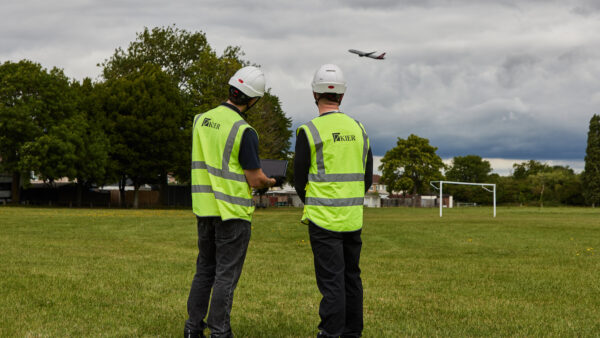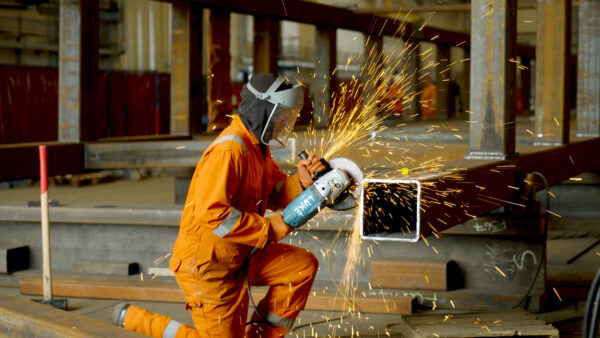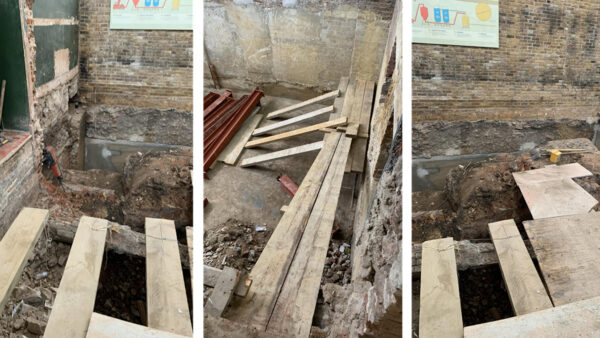
The Construction Leadership Council (CLC) has indicated the industry’s willingness to act on the Independent Review of the Construction Product Testing Regime, but has placed a significant emphasis on government action.
The product testing review, drafted by Paul Morrell OBE and Anneliese Day KC, made proposals for a regulatory shake-up to address the failings exposed by the investigation into the Grenfell tragedy.
While the government has yet to publish its response to the Morrell/Day product testing review, the CLC response puts forward 12 recommendations. Of that dozen, 11 require action from the government, while eight require action from the industry.
Among the CLC’s recommendations are that:
- the government must resolve the CE/UKCA mark issue;
- the government should organise the product testing oversight sector;
- the government must publish a programme of standards essential to increased product safety performance;
- the government, industry and the BSI should define the ‘general safety requirement’ and the ‘safety critical requirement’; and
- the industry must ensure wider adoption of the Code for Construction Product Information.
Peter Caplehorn, Construction Products Association chief executive and chair of the CLC’s Standards and Regulatory Alignment Group, said: “While [the government response] is eagerly awaited, we believe that through this response, the industry is lending its voice to what needs to be done, and demonstrating how it can help.
“It is hoped this will be helpful to industry and government alike. We will continue to look at the industry feedback in the group and develop a follow-up where appropriate or use this body of work to develop practical answers.”
CM asked Morrell for his reaction to the CLC response.
What is your general reaction to the CLC response?
I welcome it – partly as a relief from the deafening silence from Whitehall in place of the long-promised government response to the product testing review, but also because it marks a readiness for the industry to act and to make as much progress as it can in advance of regulation.
There is much common ground around many of the review’s recommendations, including, for example, acknowledging the regulatory gaps left by expecting an inherited EU system designed for the creation of a level playing field in a single market also to deliver safety (or even quality) – and even then, leaving most products unregulated.
To address that, the CLC response also recognises the potential in the concepts of a general safety requirement for construction products and special treatment for safety-critical products; the need to reform the testing process; the value of a robust third-party certification process; and a stronger future role for digitalisation.
Although not spelt out in the response, I think it is also common ground that there needs to be effective enforcement, so that those playing by the rules do not have to compete with those (in the minority, I believe) who play fast and loose with them.
Despite that common ground, does the CLC response not strike you as rather non-committal?
I can see why you might say that, and clearly the real test of the response is whether it leads to action, but it might be better to say that I can sense both caution and hesitation.

“Why would we expect government to know more about what makes for a safe building than the people who make the buildings themselves?”
I think these are rooted in two factors, the first of which is a general lack of clarity on a number of critical issues. Industry’s calls for clarity too often amount to a request to government to tell us things that we should already know: why would we expect government to know more about what makes for a safe building than the people who make the buildings themselves?
But it is fair to ask what the legislative requirements might be (the secondary legislation relating to the Regulation of Construction Products that was originally programmed to come into force in October last year is still awaited, as is any indication from the government as to what the direction of policy thinking might be), and what the future of CE/UKCA marking might be. Businesses need to know the rules of their trade.
The question of marking leads to the second major issue, which is the choice of alignment with (or divergence from) the EU regime, and it may well be that the technical, procedural and political complexities of this lie behind the lack of any indication of the direction of travel of policy. The CLC response describes divergence as “not something the industry will readily accept”, but either decision has a downside. The scope for compromise seems to be very limited if any kind of reciprocity is to be sought, so alignment means accepting any weaknesses in the EU regime and little or no influence in changing it.
In the meantime, it has to be acknowledged that conceiving, designing, manufacturing and marketing a new product demands an enormous amount of investment in effort, time and cash. Those making changes to the hurdles to be cleared on the way to market therefore need to be sure that each change will bring proportionate benefits (in this case, making a direct contribution to improved public safety) and that businesses have time to re-tool (in which respect I would say it’s already too late to introduce changes to the marking system by next July).
I think fear that neither of these things (benefit and time) will happen lies behind a nervousness of change, and consequently an affection for the status quo, that runs through the CLC response.
So, what now?
For all the complexities of this, two things are surely common ground: that products should be safe (whatever we may decide that “safe” means) and that all claims made for products should be verifiable (whatever process might be required or agreed upon to verify those claims).
I cannot help with the EU issue: that is for the government. But to be clear, I am firmly on the side of change, as we certainly don’t just need more of what caused the problem.
“Those making changes to the hurdles to be cleared on the way to market therefore need to be sure that each change will bring proportionate benefits.”
One way of providing clarity would be for the government to be clear about what duties manufacturers, distributors, etc will owe, with the industry developing detail around what due diligence in respect of those duties would look like – and the courts then deciding whether indeed due diligence has been exercised. This is envisaged in the CLC response, and I am wholly supportive of the idea. Coupled with the principles of the Code for Construction Product Information, it could provide a level of assurance over the whole lifecycle of a product.
At a more practical level I do think there is mileage in the twin concepts of a general safety requirement (of the kind that already exists for consumer products) and of safety criticality (albeit of elements of construction, not individual products). There are real issues around both concepts, some of which are spelt out in the Morrell/Day report, and if they are just landed on the industry with those issues unresolved, then clarity will certainly not be served.
But a suggestion to the previous government (which one would repeat to the present one) is that if the minister announces that policy is likely to be based on those concepts, subject to working out with the industry exactly what the terms “safe” and “safety critical” mean, and how they could function as the foundations of a new regulatory regime with clear duties, then there is a constructive way ahead.
We indicated in the testing review what needs to be fixed, but the details of how effective change can be designed and implemented should come from consultation between government and the industry, following a clear statement of intent from government as to what duties the industry should be bound to, and then a serious conversation of the industry with itself as to how it can bind itself to those duties.











